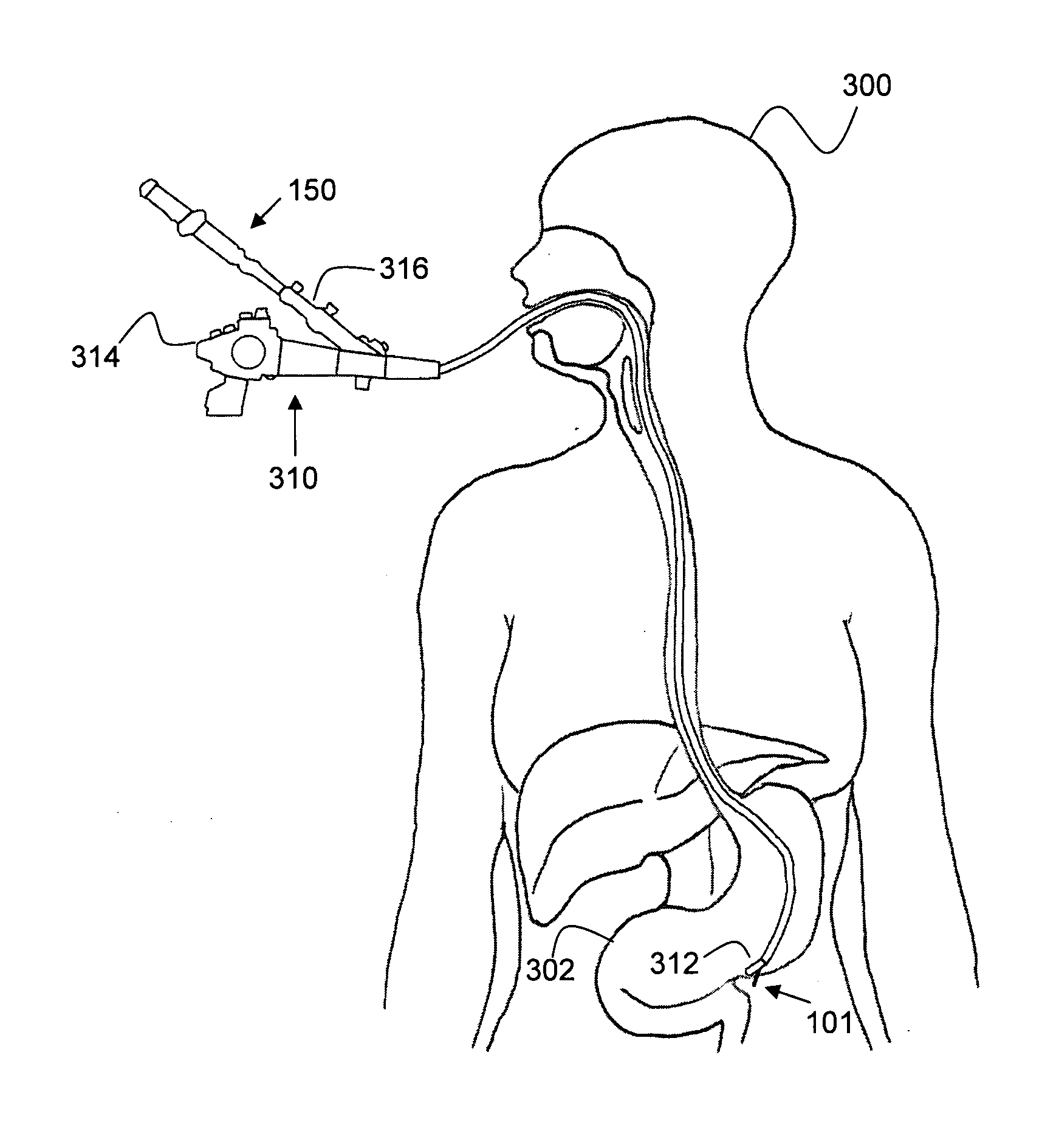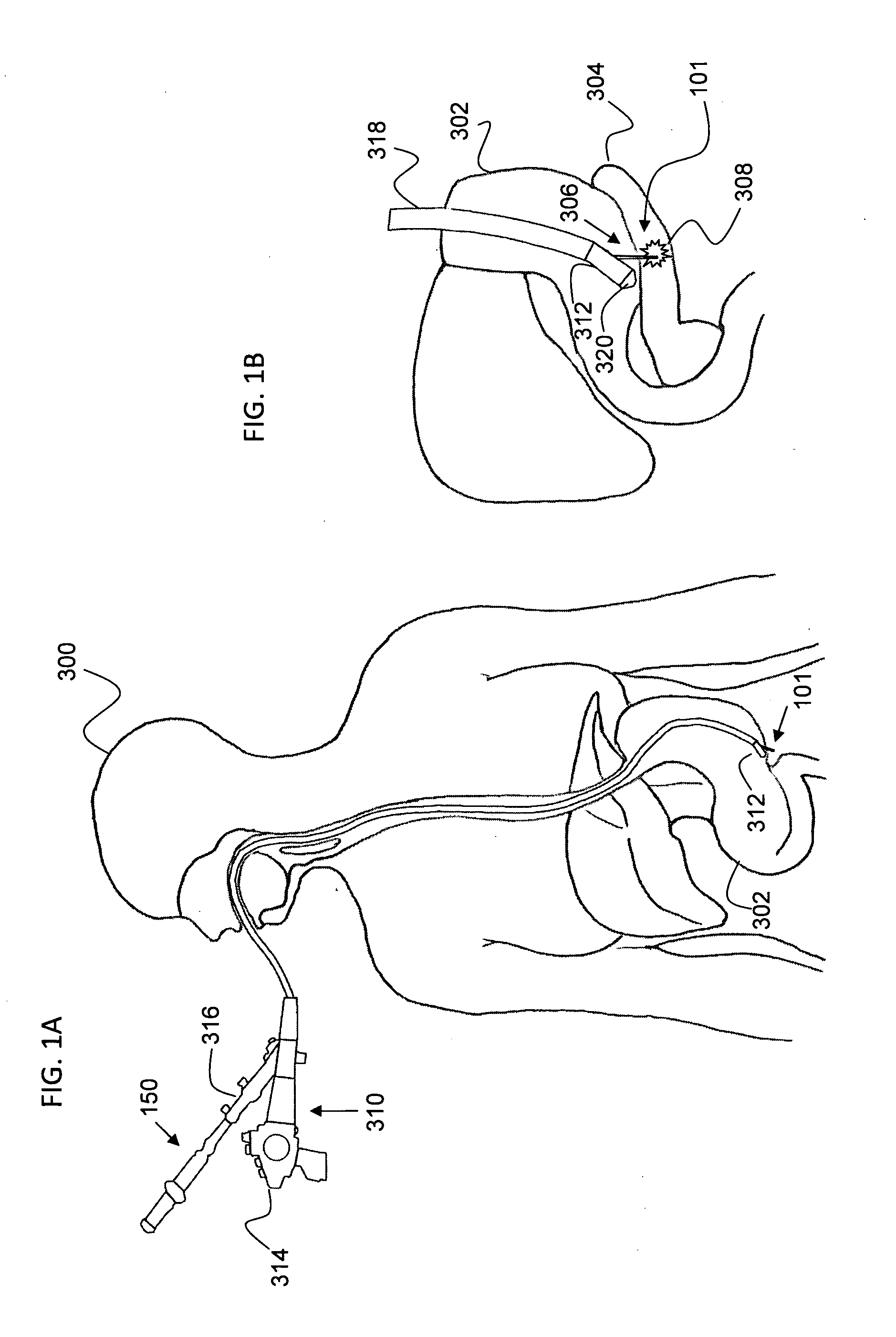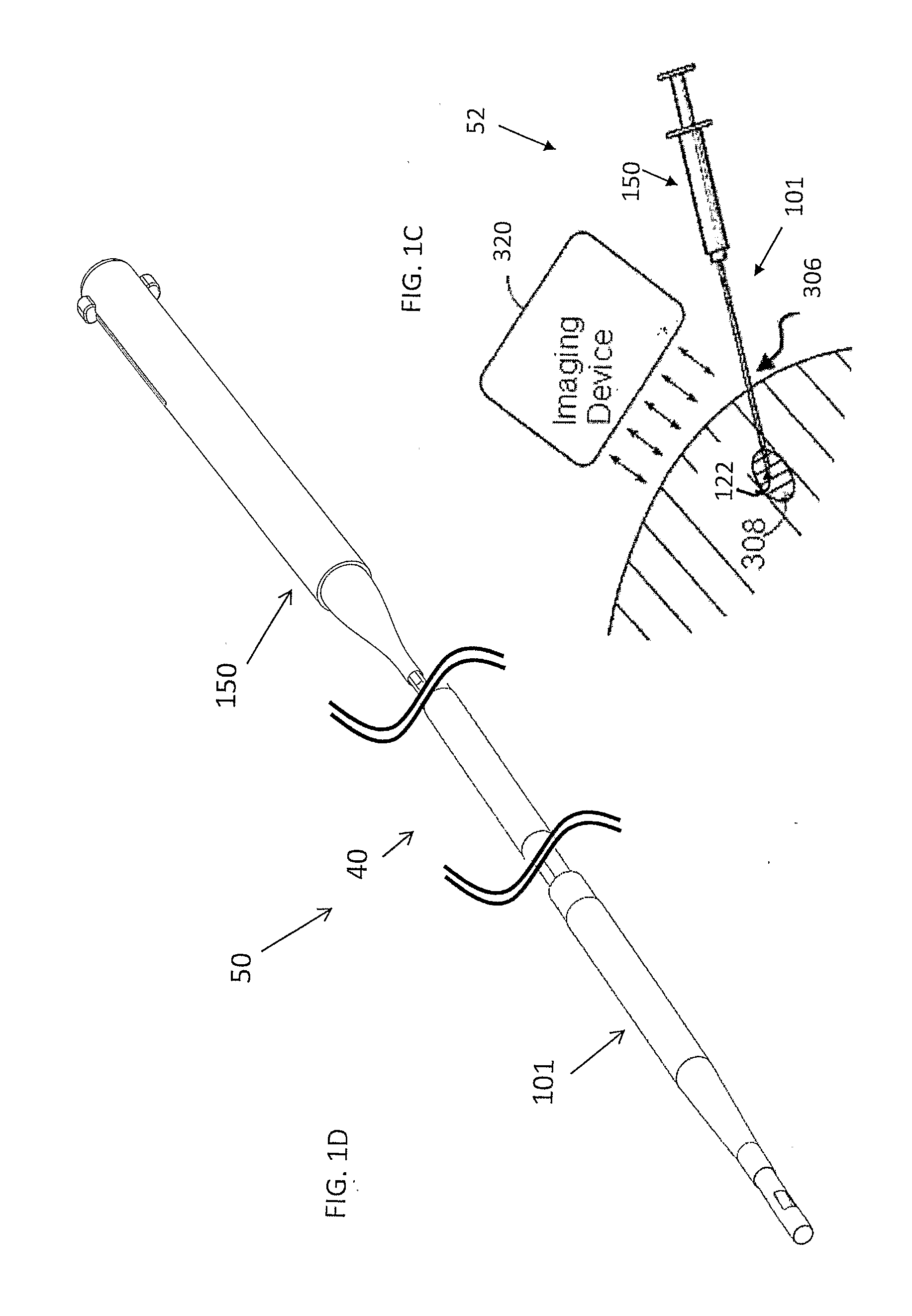Method and system for implant delivery
a treatment element and implant technology, applied in the field of treatment element delivery methods and systems, can solve the problems of viral vectors, barriers preventing translation into a simple therapeutic modality, and no implant delivery system and method can meet the challenges, requirements and needs, and achieve the effect of effective implantation and improved storage and logistical of implants
- Summary
- Abstract
- Description
- Claims
- Application Information
AI Technical Summary
Benefits of technology
Problems solved by technology
Method used
Image
Examples
example 1
Locations of Target Tissues, Disease Types, and Implantation Methods
[0303]Table 1 presents examples of locations of target tissues, disease types, and the methods used to implant the non-fluid treatment element according to the present invention termed a “LODER” using the systems and method described hereinabove.
TABLE 1Location / TargettissueDiseaseMethodPancreas-headPancreatic cancerDirect-percutaneousDuodenal EndoscopeEUS-NOTES through thestomachPancreas-bodyPancreatic cancerDirectand tailEUS-NOTES through thestomachLiverHepatomaDirect-similar to percutaneousliver biopsyTransvenous-similar toTransvenous Liver Biopsy-system is inserted via a sheaththrough the jugular vein thehepatic veinsLaparoscopicEUS-NOTES through thestomachProstate glandProstate cancerDirectBrachytherapy-procedureresembles the Permanent SeedImplantation, the implantationsystem is inserted through a flexiblecatheter.BonesOsteomeialitisDirect, with drillEsophagusChrons; BarrettEndoscopic, with fixation / balloonCance...
example 2
Pancreatic Cancer (Hilar Cholangiocarcinoma)
[0304]Pancreatic cancer is an aggressive tumor which is usually diagnosed at late stage. The current estimated of new cases and deaths from pancreatic cancer in the United States in 2008 is 37,680 for new cases and 34,290 for deaths. Carcinoma of the pancreas has had a markedly increased incidence during the past several decades and ranks as the fourth leading cause of cancer death in the United States. Despite the high mortality rate associated with pancreatic cancer, its etiology is poorly understood. Cancer of the exocrine pancreas is rarely curable and has an overall survival (OS) rate of less than 4%. The highest cure rate occurs if the tumor is truly localized to the pancreas; however, this stage of the disease accounts for fewer than 20% of cases. For those patients with localized disease and small cancers (<2 cm) with no lymph node metastases and no extension beyond the capsule of the pancreas, complete surgical resection can yield...
example 3
[0308]One specific example of esophageal cancer is Barrett's esophagus referring to an abnormal change, metaplasia, in the cells of the lower end of the esophagus, thought to be caused by damage from chronic acid exposure, or reflux esophagitis. Barrett's esophagus is found in about 10% of patients who seek medical care for heartburn, gastroesophageal reflux. It is considered to be a premalignant condition and is associated with an increased risk of esophageal cancer.
[0309]An optional embodiment according to the system and method of the present invention provides for the treatment of such esophageal cancer. Optionally indirect delivery of at least one or more treatment elements 10 with the aid of an auxiliary device such as an endoscope or catheter according to optional embodiment of the present invention as previously described may be provided for a comprehensive treatment. Optionally the system for radial delivery of at least one or more treatment element specific...
PUM
 Login to View More
Login to View More Abstract
Description
Claims
Application Information
 Login to View More
Login to View More - R&D
- Intellectual Property
- Life Sciences
- Materials
- Tech Scout
- Unparalleled Data Quality
- Higher Quality Content
- 60% Fewer Hallucinations
Browse by: Latest US Patents, China's latest patents, Technical Efficacy Thesaurus, Application Domain, Technology Topic, Popular Technical Reports.
© 2025 PatSnap. All rights reserved.Legal|Privacy policy|Modern Slavery Act Transparency Statement|Sitemap|About US| Contact US: help@patsnap.com



